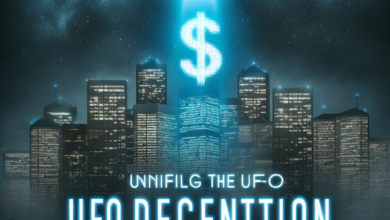Exploring the Hypothetical Strategy Behind UFO-like Drones: A Plan to Spark Hysteria and Its Hidden Goals
The Intrigue of UFO Sightings and UAP Encounters: A Hypothetical Strategy for National Intelligence
In a world where UFO sightings and unexplained aerial phenomena (UAP) capture the public’s imagination, it’s intriguing to contemplate how such a narrative could be strategically managed. Hypothetically speaking, if national intelligence were to capitalize on the widespread excitement and hysteria surrounding these incidents, here’s how it might unfold.
Understanding the Strategy Behind UFO Sightings
Strategic Deployment of Drones
To maximize visibility and fuel speculation, mysterious drones could be deployed across the nation in certain high-profile locations:
- Over Major Population Centers: Flying drones over densely populated urban areas would draw attention and spark conversations about potential extraterrestrial activities.
- Near Critical Infrastructure: Positioning drones close to power plants and military bases would heighten concerns about national security.
- Remote Areas: Deploying drones in secluded regions would create intrigue and suspicion regarding hidden activities.
The Role of Evasive Technology
In this hypothetical scenario, the drones would be equipped with advanced and unconventional designs that render them almost untraceable. Such technology would contribute to theories surrounding their extraterrestrial or foreign origins, enhancing the mystery behind these UFO sightings.
Amplifying the Narrative Through Media
To stoke public interest and speculation, strategic media engagement would be key. This could include:
- Controlled Leaks and Social Media Buzz: Utilizing ambiguous official statements alongside leaked information would keep audiences guessing.
- Establishing a Culture of Uncertainty: A lack of concrete acknowledgment from government officials would allow speculation to thrive, further engaging the public in the narrative.
Exploring the Potential Purposes of the Strategy
The hypothetical deployment of these mysterious drones could serve multiple purposes:
Testing Public Response
One potential goal of this strategy could be to study how the public reacts to perceived threats and unexplained phenomena, providing valuable insights for future crisis management.
Distraction from National Issues
The spectacle of UFO sightings could redirect attention from controversial policies or political scandals, effectively managing public focus.
Promoting National Unity
A common, mysterious “threat” might unite citizens and reinforce trust in government protective measures, rallying the nation under a singular cause.
Justifying Increased Surveillance
Amidst rising hysteria over these UFO encounters, it could become politically expedient to expand surveillance capabilities, framing the move as a necessary step for national security.
Counterintelligence Deception
In this scenario, the mysterious drones might serve as decoys, distracting adversaries from covert operations, ensuring strategic activities remain under wraps.
Evaluating Defense Systems
The frequent appearance of unidentified drones would provide opportunities to test and evaluate the efficacy of radar systems and rapid response protocols, strengthening national defense.
Shaping Public Perception of Advanced Threats
By creating a narrative of superior unknown technologies—be it foreign adversaries or extraterrestrial origins—this strategy could influence public opinion, potentially paving the way for increased defense spending.
Reinforcing a Controlled Narrative
Ultimately, the situation could be utilized to reinforce a narrative of “unknown threats,” cueing citizens to turn to government channels for assurance and guidance.
Ethical Considerations in UFO Narratives
While this strategy may deliver short-term objectives, it raises significant ethical implications. A deliberate manipulation of public hysteria could undermine trust in government, infringe on privacy rights, and cultivate unwarranted fear. The long-term impact of such tactics on democracy, transparency, and civil liberties would require careful consideration.
Conclusion
Though purely speculative, this exploration into how UFO sightings and UAP encounters could be strategically managed reveals much about the intersection of intrigue, national security, and public perception. As society continues to grapple with these phenomena, understanding the underlying motives and potential implications creates a valuable dialogue on the ethics of information control and public trust in authority.




